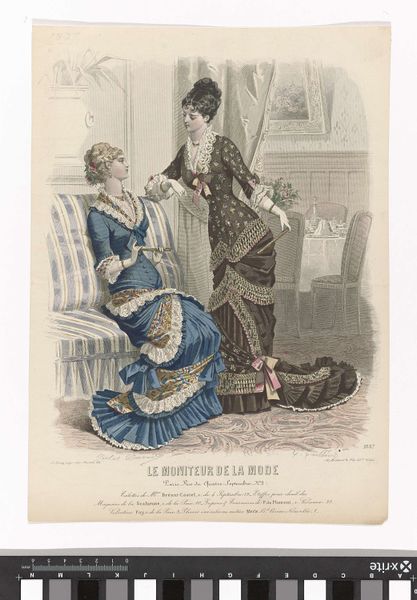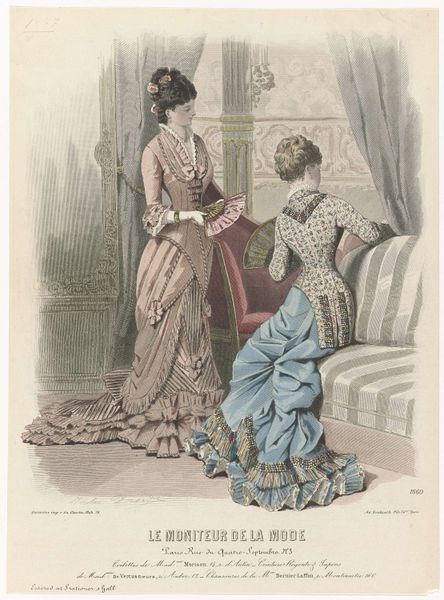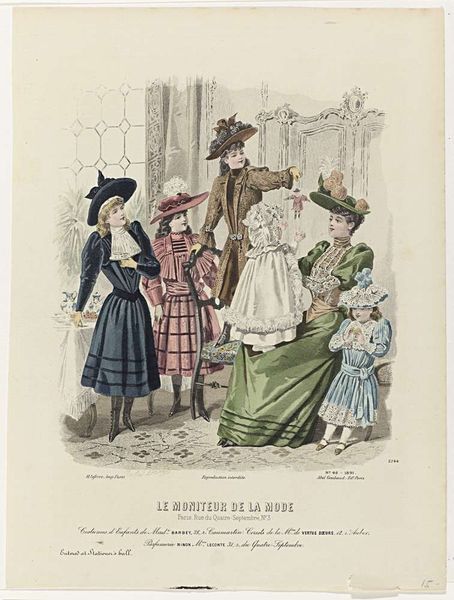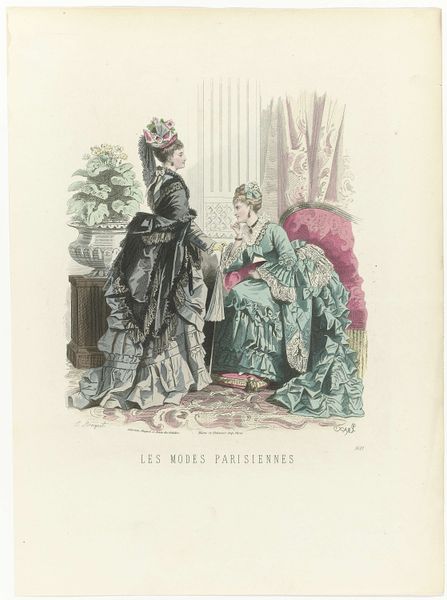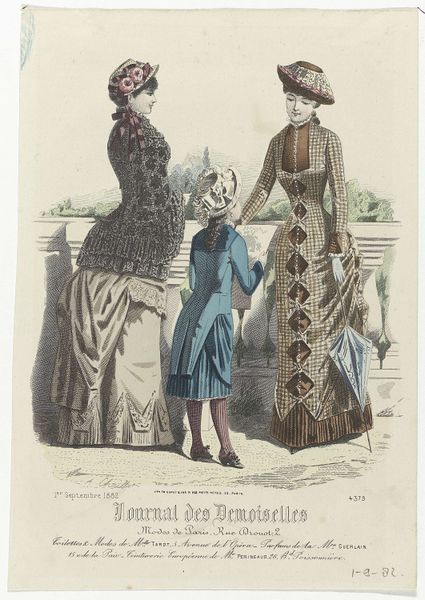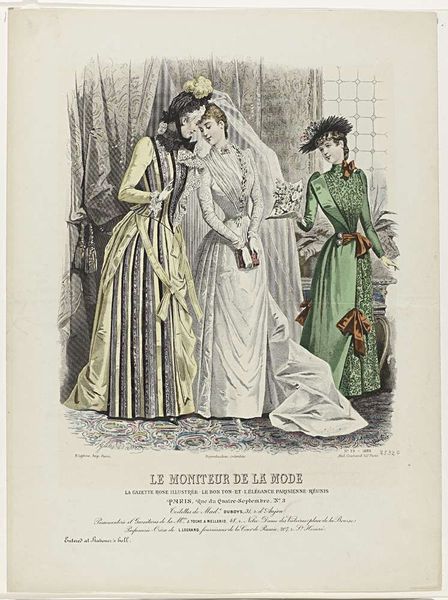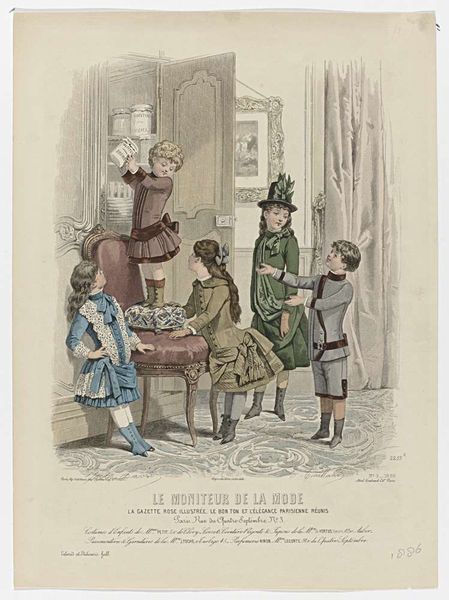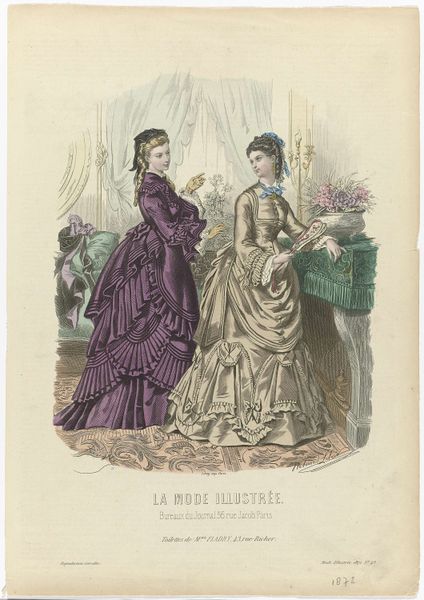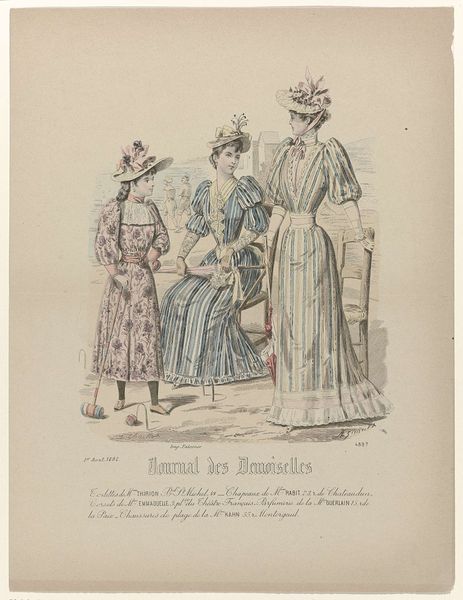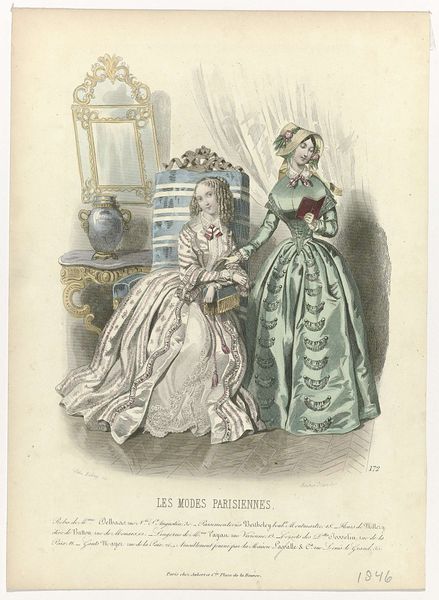
Dimensions: height 317 mm, width 236 mm
Copyright: Rijks Museum: Open Domain
Curator: Here we have an impression from "Le Moniteur de la Mode," specifically No. 1645e from 1879, created by J. Bonnard, combining printmaking with watercolor. What's your immediate take? Editor: I’m struck by the profusion of layered textiles. All of that ruching and flounces—imagine the labor involved! And the crisp detail, likely achieved with hand-applied color. Curator: Indeed, look closer. You’ll notice this aesthetic embodies idealized domesticity. The fashionably dressed family within a carefully arranged interior—a powerful statement about bourgeois life at the time. The placement of the portrait above the fireplace suggests ancestor worship or paying homage to an elder family member and thus speaks to tradition and social stability. Editor: The costumes certainly communicate status. Yet, it is fascinating how this print presents fashion not just as surface adornment but as a direct product of labor – from the designers and seamstresses to those who sourced and processed the fabrics. These fashion plates functioned like blueprints to recreate similar designs, democratizing access to elite trends to a degree. Curator: I’d also note that while it functions as a genre painting, the emphasis isn’t merely observational. The gestures of the figures—the mother presenting the toy, the girl engrossed in a similar periodical, perhaps— speak to the cyclical nature of influence, with fashion and behavior inextricably intertwined. This particular composition shows figures of various ages to illustrate how women across generations adopted trends while passing traditions down. Editor: What strikes me too is how the materials are carefully rendered – the sheen of the silk, the drape of the lace – it gives a sense of texture and dimensionality through the printed form. I’d be curious to know where these kinds of prints would have been viewed and consumed – from personal scrapbooks and salon walls to professional tailor workshops where designs are implemented. Curator: Ultimately, pieces like this one aren’t simple records; they're encoded narratives reflecting social mores, family structures, and the pervasive reach of fashion. Editor: Right, they point to the intensive processes involved in constructing visual culture, blurring lines between commerce, art, and craft. I like how those layered details expose networks of human involvement and industrial processes in service of aspiration and representation.
Comments
No comments
Be the first to comment and join the conversation on the ultimate creative platform.
